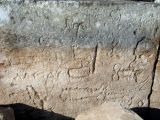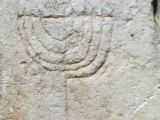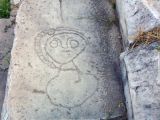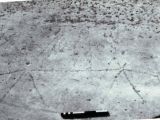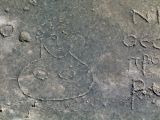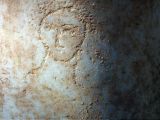Speaking at this year's meeting of the Classical Association of Canada, researcher Angelos Chaniotis of the Institute for Advanced Study in New Jersey, US, described millennia-old graffiti recently discovered adorning the walls of the ancient city of Aphrodisias in present-day Turkey.
The ancient artworks, photos of which are included in the gallery below, are believed to have been created sometime around 350 AD to 500 AD, which means that they are over 1,500 years old.
As far as design and execution go, they engravings are rather simplistic. Then again, this is perfectly understandable seeing how they were created not by artists but by regular people. Interestingly, this is precisely what makes these ancient wall scribblings so valuable to archaeologists.
“Graffiti are the products of instantaneous situations, often creatures of the night, scratched by people amused, excited, agitated, perhaps drunk. This is why they are so hard to interpret.”
“But this is why they are so valuable. They are records of voices and feelings on stone,” Institute for Advanced Studies researcher Angelos Chaniotis said in an interview, as cited by Live Science.
Many of the engravings show gladiators in combat
Of the hundreds of graffiti artworks discovered by archaeologists in the ancient city of Aphrodisias in present-day Turkey, many show gladiators battling each other in the arena.
This goes to show that, in ancient times, people living in Aphrodisias, then part of the Roman Empire, were quite fond of gladiator fights. So much so that they depicted some of the combats they witnessed on the walls of the stadium where these battles took place.
Of these depictions, one shows a gladiator armed with a trident and a net fighting another armed with a sword and a shield, Angelos Chaniotis said at the meeting of the Classical Association of Canada.
Other engravings show racing chariots and Christian, Jewish and polytheistic religious symbols and objects. Among these religious graffiti etchings are representations of the cross, a Hanukkah menorah and crossed axes honoring a god named Carian Zeus.
Interestingly, archaeologists exploring the remains of this ancient city in Turkey say that, on one plaque embedded in one of the settlement's walls, they identified numerous representations of phalluses.
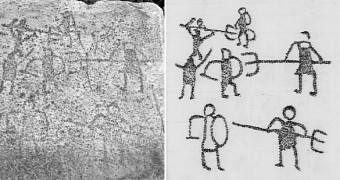
 14 DAY TRIAL //
14 DAY TRIAL // 
